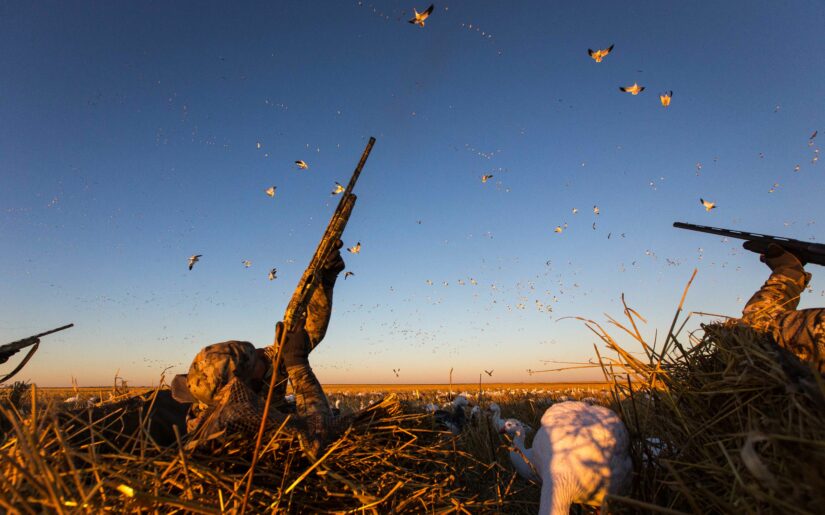With around a million waterfowl hunted each year in the US, it’s no surprise that duck hunting is a favorite sport for many. If you’re just starting out, there are a few pieces of gear you will want to pick up to ensure the best possible hunt! From a shotgun and decoys to duck calls and a game strap, we’re rounding up our top 10 duck hunting gear must-haves.
While the list of necessary equipment isn’t long, there are a few things you’ll want to pick up. Hunting duck is an entirely different experience than hunting, say, deer — and that means that the gear you need is a little different, too!
HUNTINGsmart!’s Top 10 Duck Hunting Must-Haves
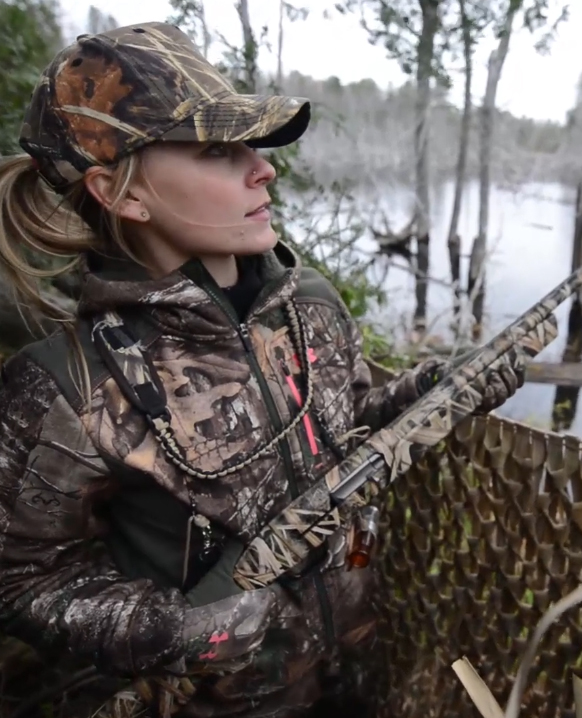
Shotgun
If you’re going to take part in any kind of hunting, you’ll need a firearm. When it comes to waterfowling, you’ll want to go for a shotgun — and one that feels comfortable to use. Women and youth need to pay particular attention to stock length to ensure a comfortable mount and hold. A gun with too much stock behind the trigger can lead to an inability to keep the gun securely in the pocket of the shoulder. This will result in frustration and an inability to get a good shot.
In terms of gauge, experienced hunters would recommend either a 12-gauge, 16-gauge or a 20-gauge, and a smaller percent would add a 10 or 28 to the mix. The 12-gauge shotgun has long since seemed to be the gold standard since the inception of non-toxic shells, however, they often have quite a bit of kick and a heavy recoil. Non-toxic shells have come a long way since becoming the legal requirement, and more hard-hitting shells like copper-plated bismuth are now available. This means that a 20-gauge shotgun can be just as effective and may feel easier to use for a beginner.
Another consideration to make is whether you want a semi-autoloader vs a pump action. Keep in mind your budget and hunting location when deciding on which to choose. Cold temperatures and wet, mucky conditions can spell trouble for a semi-automatic. However, using a pump action in a tight blind might be a challenge as well. A semi-automatic comes with a higher price tag, but allows for faster, smoother action and less recoil. A pump action is more affordable, low maintenance and is more equipped to handle the elements.
Non-Toxic Shotgun Shells
In the US, it’s illegal to use toxic shots when hunting waterfowl due to their effect on migratory birds. The US Fish and Wildlife Service (USDWS) define a non-toxic shot as, “any shot type that does not cause sickness and death when ingested by migratory birds. Prior to 1991, lead was the shot of choice for migratory birds such as ducks. Lead can enter the bloodstream of a bird that may ingest the leftover shot, leading to poisoning and even death. It can also breakdown and enter the groundwater, effecting more than just migratory birds.
The USDWS has approved 14 non-toxic shots for use, including steel, tungsten, and bismuth. You can find their full list of approved shots here.
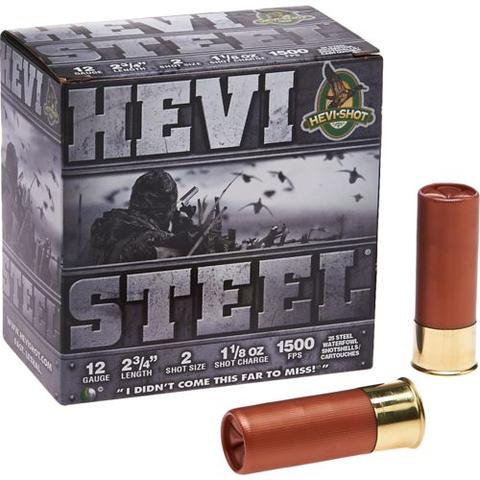
Source: Foundry Outdoors
Decoys
Duck hunting is easier and a lot more effective with an array of good decoys. Pick up and then pack a mixture of decoys that seem natural to the surrounding ducks. Use a mixture of feeding decoys, sleeping decoys and motion decoys where you can. This is an area where you can start small and grow your collection over time. Make sure to tailor your decoy collection to the species you most often see in your area.
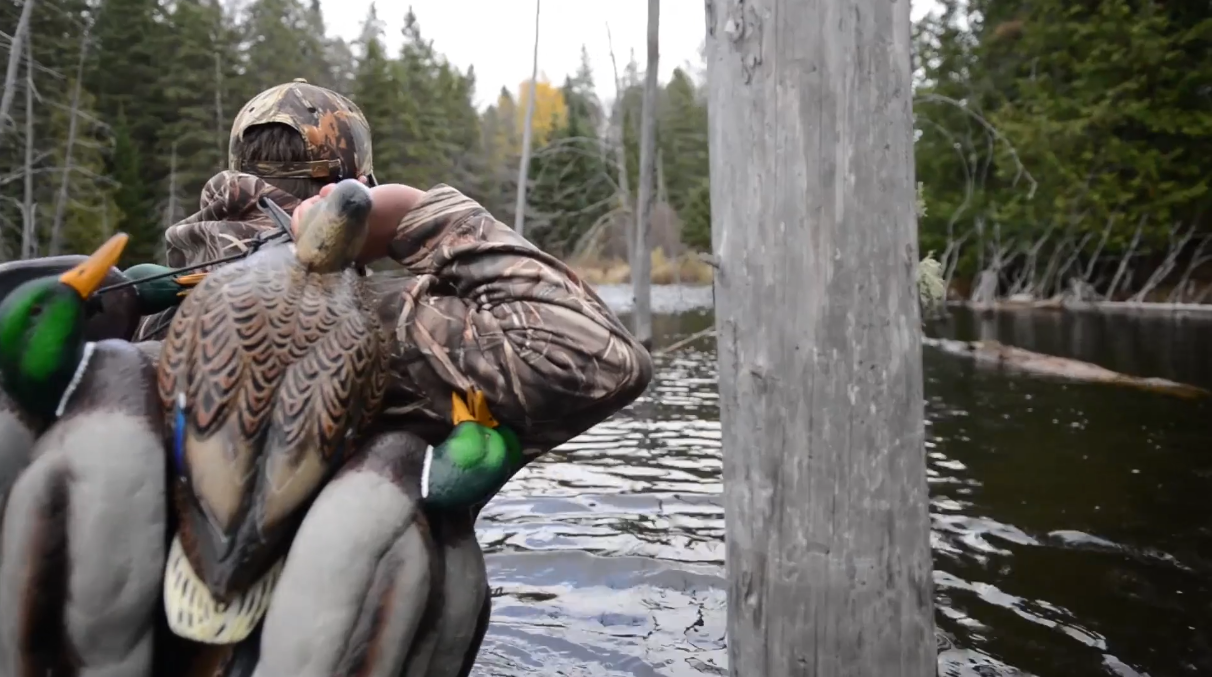
Duck Calls
When it comes to duck calls there are two basic decisions to be made: number of reeds and material. Many hunters like to be prepared with multiple calls for a range of sounds and tones. However, if you’re just starting out, you may only be equipped with one.
A single reed call has the most versatility when it comes to volume and tone. However, they require correct air control and technique, so practice will make perfect here! A double-reed call is more forgiving for technique, making it more user-friendly. This also makes it a better fit for new to sport duck hunters. The trade-off is a smaller range of volume and tones.
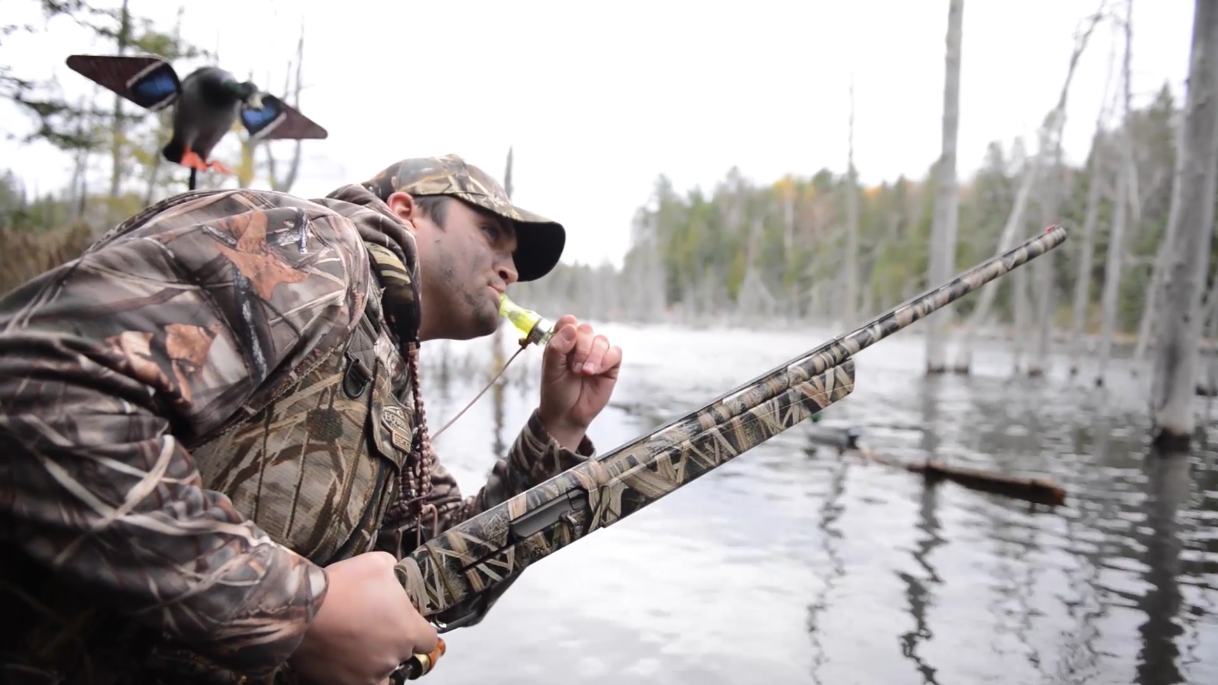
Duck calls typically come in polycarbonate, wood, and acrylic. The type of material you choose will affect the price as well as durability. At the top of the price point is acrylic calls. With this price point comes high quality acoustics and durability. Wood calls are made of dense woods that also produce a high-quality sound. Wood, however, is more susceptible to humidity, temperature, and moisture. A polycarbonate call is durable, affordable and comes with great acoustics.
Waders
Finding a good quality wader is extremely important when it comes to waterfowling. The last thing you need is a soupy boot when traveling out to retrieve your decoy. Do your research, ask around and find the best quality wader in your price range. Look for durability, toughness, and good insulations. Find a camo pattern that matches the environment in which you plan to hunt. We always suggest a boot-foot configuration to avoid losing a boot while mucking around. If budget allows, it’s always nice to add some extras too – like hand warming pockets or looped shell holders. The thickness of your waders is going to depend on the area you’re in. For instance, someone duck hunting in a warmer climate will be fine with 3-millimeter waders, while someone in a colder climate can benefit from 5-millimeters.
Make sure to try the waders on before purchasing to ensure you can move freely and comfortably. The last thing you need is added discomfort while climbing around on already uncertain terrain.
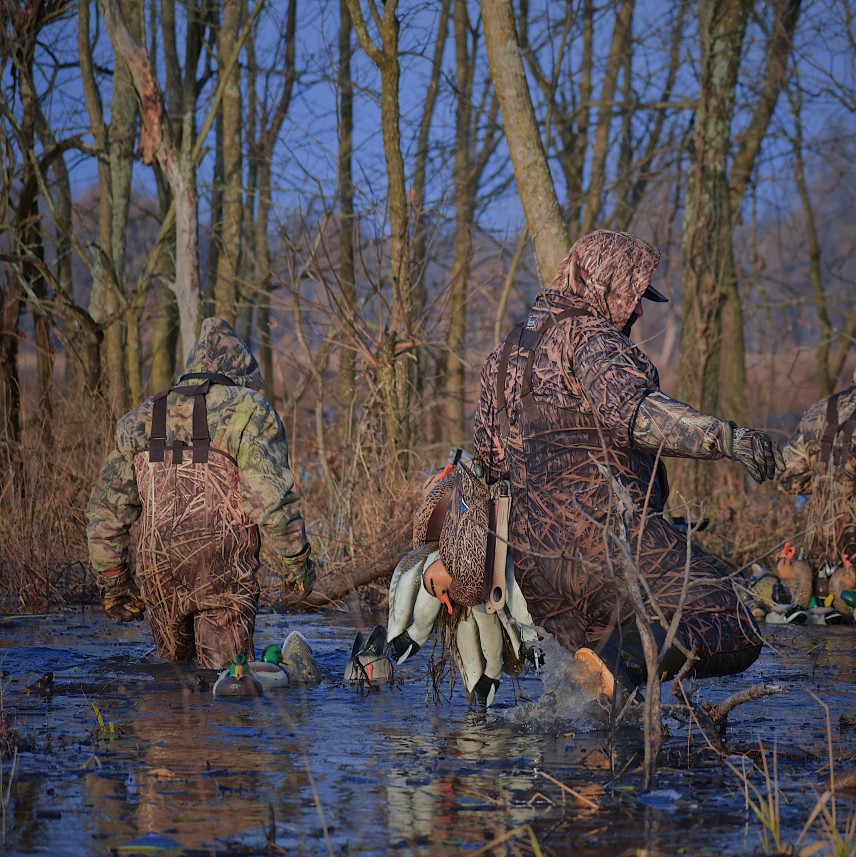
Jacket
A great duck hunting jacket can make all the difference in the comfort of your hunt. You can go basic with your hunting jacket, or you can pick up a jacket in the same material as your waders to keep you warm and dry. The key? To find something that strikes the balance between breathable and warm. Just like your waders, match your camo to the environment you plan to hunt to keep you hidden from incoming waterfowl.
Headlamp
The easiest way to improve your duck hunt is with a bright headlamp that lets you see through water and keep an eye on what’s around you. Look for one that’s rechargeable and can change colors (white and red lights can both be great). This is an area where you can be versatile, too — a great hunting headlamp can be a huge help in a variety of hunting situations outside of just duck hunting.
Neoprene Gloves
A pair of neoprene (or even nylon) gloves is necessary for a duck hunt, whether the gloves are helping you to keep your hands warm or protecting your hands from blood and bacteria from the ducks themselves. Look for a camouflaged, waterproof pair here — and look for a pair that goes up to at least the middle of your forearm.
Game Strap
Once you’ve had a successful duck hunt, you must have a way to transport your ducks — and that’s where a game strap comes in! Look for a strong one (leather is great!), and make sure it holds at least 12 birds. When your strap can hold 12 birds, you can account for a mix of ducks and decoys, which is helpful and efficient.
An appropriate blind for your location
Perhaps one of the most important practices in hunting migratory birds is the art of concealment. Concealing yourself (and your dog in some cases) from incoming waterfowl is crucial to the success of your hunt. A ducks vision is 2-3 times better than a human, and any glare or motion will give you away instantly. There are many different types to choose from, and the right choice typically comes down to hunting location.
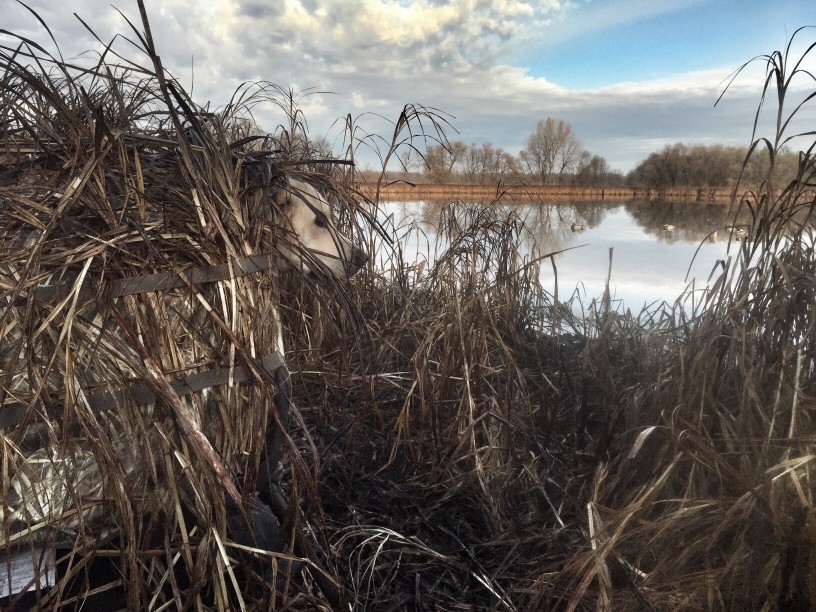
Natural Blind
The most cost effective yet most labor intensive blind is a natural one. Using materials from the area such as driftwood and branches to build your frame you can cover the sides with grass, reeds and other vegetation from your surroundings. Make sure to pack plenty of ties, wire, pruning shears and a saw to construct your blind.
Layout Blind
If you’re hunting in agricultural fields or short grass along the edge of a river or pond, you may want to consider a layout blind. This will keep you concealed low to the ground and allow you enough room to sit up and take your shot. Ensure to use a mixture of mud and water to coat the outside of the blind to remove any sheen and cover the entire structure with grasses and vegetation to soften the edges and blend it perfectly into the surrounding.
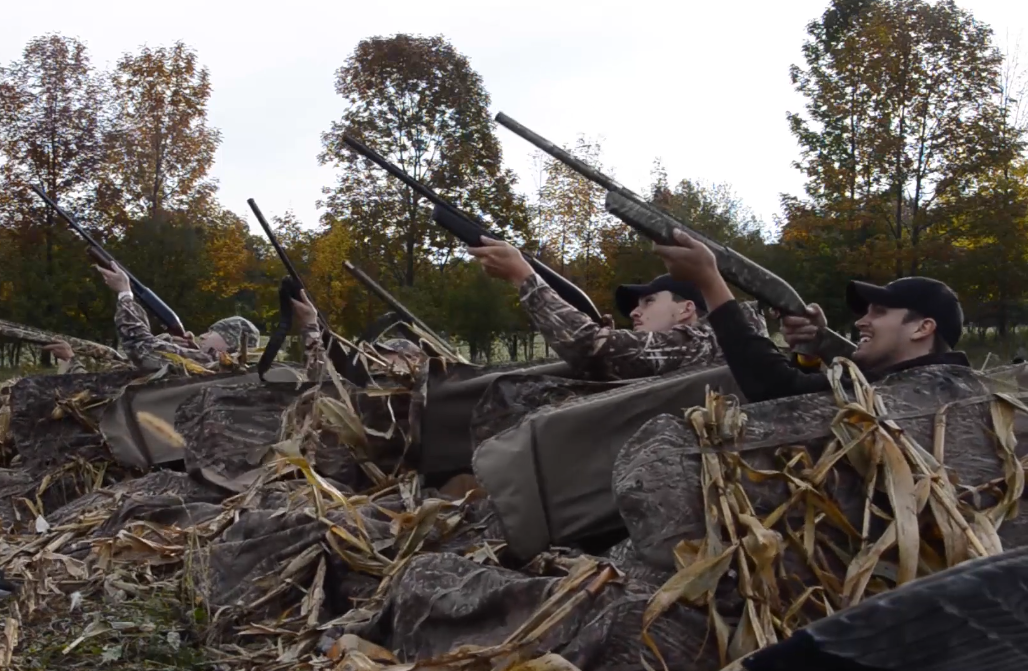
A-Frame Blind
An A-frame duck blind is meant to hide in plain sight, though blending it into your surroundings is still best practice. These are great for hunting with a few friends, with your dog or for those who have yet to master shooting from a laying position. Larger in size, these blinds can take a considerable amount of time to assemble and work best when you don’t have far to travel.
Permanant Blind
The last blind to consider is a permanent blind. While all previously mentioned styles are temporary structures, if you’re lucky enough to be able to duck hunt your own property, you might want to consider a more permanent structure. These can be a simple structure constructed of a pipe frame and chicken wire that’s covered in vegetation or can be more elaborately constructed with wood and all the bells and whistles you could dream of. The main benefit of a permanent structure is obvious – less setup/tear down time. However, it is also worth mentioning that setting up in a permanent structure is less disruptive to the environment which may bode well for the success of your hunt.
—
There you have it — our beginners guide to duck hunting gear! There’s plenty of other items you can add to build your arsenal as you gain more experience, but we think this is a really great place to start. With the right gun, gear, and coverage, we’re sure your duck hunting adventures will be full of success!
